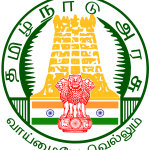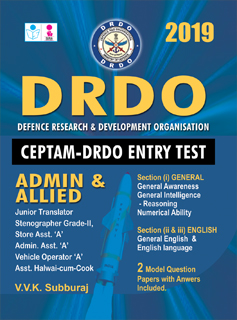
1. Who is regarded on the “Father of All India Services” ?
A) Lord Macaulay
B) Lord Cornwallis
C) B.R. Ambedkar
D) Sardar Patel
Explanation : Ans : (D)
Sardar Vallabhbhai Patel was the chief protagonist of All India services in the Constituent Assembly. Hence, he came to be regarded as the “Father of All India Services”.
The formation of an independent civil service free of political considerations either in its recruitment or in its discipline and control was the idea of Sardar Vallabhbhai Patel.
2. Which of the following cases deals with the Fundamental Duties ?
A) Kesavanandha Bharathi Case
B) Ramsharan Case
C) Golaknath Case
D) Minerva Mills Case
Explanation : Ans : (B)
Kesavanandha Bharati Case (1973), Golaknath Case (1967), Minerva Mills Case (1980), deals with the Basic structure of the constitution.
Ramsharan Case deal with the Fundamental Duties.
3. GST is implemented on which date onwards ?
A) 01.7.2017 B) 30.6.2017
C) 02.07.2017 D) 03.07.2017
Explanation : Ans : (A)
Goods and services tax
Goods and Services Tax (GST) is a comprehensive indirect tax which is to be levied on the manufacture, sale and consumption of goods and services in India. It was introduced as the 101 constitution act (122 amendment bill).
This is so far the biggest tax reform in the country which is came in to effect on 1 july 2017. GST eliminates the cascading effect of taxes because it is taxed at every point of business and the input credit is available in the value chain.
Historical Background :
France was the first country to introduce GST system in 1954. More than 140 countries have implemented the GST. Genesis of GST occurred during the previous NDA Government under Atal Bihari Vajpayee Government when it set up the Asim Dasgupta committee to design a model for GST. The UPA Government took the matter further and announced in 2006 that this tax would be introduced from April 1, 2010. However, it was not introduced. All the GST bills including Constitution (101st Amendment) Act were passed in 2017 and GST came into force from July 1, 2017.
Taxes Replaced by GST :
GST would replace almost all vital indirect taxes and cesses on Goods & Services in the country. Among the taxes levied by centre, GST will subsume the following :
Central Excise duty & Service Tax
Duties of Excise (Medicinal and Toilet Preparations)
Additional Duties of Excise (Goods of Special Importance)
Additional Duties of Excise (Textiles and Textile Products)
Additional Duties of Customs (commonly known as CVD)
Special Additional Duty of Customs (SAD)
Central Surcharges and Cesses so far as they relate to supply of goods and services
Among the state taxes that would be replaced by GST include :
State VAT
Central Sales Tax c. Luxury Tax
Entry Tax (all forms)
Entertainment and Amusement Tax (except when levied by the local bodies)
Taxes on advertisements
Purchase Tax
Taxes on lotteries, betting and gambling
State Surcharges and Cesses so far as they relate to supply of goods and services
Commodities Not under GST
Potable alcohol
Five petroleum products viz. petroleum crude, motor spirit (petrol), high speed diesel, natural gas and aviation turbine fuel
Electricity
The above arrangement is “temporary” and the GST Council will decide the date from which they shall be included in GST
Understanding Dual GST
Most of the countries have a unified GST system. Brazil and Canada follow a dual system where GST is levied by both the Union and the State governments. India also has dual GST where Centre and States simultaneously levying it on a common tax base. The structure is as follows :
For intra-state trade : The GST levied by centre is called Central GST (CGST) while that levied by states / UTs is State GST (SGST) or UTGST.
For inter-state trade : For inter-state supply of Goods & Services, an Integrated GST (IGST) will be levied and administered by Centre. CGST and IGST will be levied and administered by Centre; while SGST / UTGST will be levied and administered by respective states and UT administrations.
Principles followed in adopting dual GST
The Principle of fiscal federalism has been adapted where by centre and states have been assigned powers to levy and collect taxes through appropriate legislations.
Constitution 101st amendment Act, 2016
This is the enabler act for GST and it amends several important articles and schedules of the constitution of India. The new articles added by this amendment to Indian Constitution are Article 246–A (Special provision with respect to goods and services tax); Article 269–A (Levy and collection of goods and services tax in course of inter-State trade or commerce) and Article 279A (GST Council). Two schedules of Indian constitution have been changed viz. 6th schedule and 7th schedule.
GST is a Destination Based Tax
GST is a destination based tax, which means that it would accrue to the taxing authority which has jurisdiction over the place of consumption which is also termed as place of supply. This implies that the states which consume more than manufacture will benefit. It may not be encouraging for the states which are top in production of goods and services.
In GST, CGST and SGST will be simultaneously levied
The CGST and SGST will be simultaneously levied on every transaction of supply of goods and services. Both will be levied on same price. The location of the supplier and recipient is immaterial for the purpose of levy of both the taxes.
Both States and Centre have a say in GST rates
Under GST regime, both the CGST and SGST would be levied at rates jointly decided by centre and states. These rates would be notified on recommendations of GST Council.
GSTN is the Special Purpose Vehicle for GST administration
Goods and Service Tax Network (GSTN) is a Special Purpose Vehicle (SPV) set up to cater to the needs of GST. The GSTN shall provide a shared IT infrastructure and services to Central and State Governments, tax payers and other stakeholders for implementation of GST.
12. Many workers in urban areas suffer from
A) Sub-employment
B) Unemployment
C) Seasonal employment
D) Under employment
Explanation : Ans : (A)
Many workers in urban areas suffer from subemployment.
Subemployment is a condition of inadequate employment in a labour force including unemployment and underemployment.
15. An adult is defined as one in the age group
A) 14-35 B) 15-35
C) 16-35 D) 17-35
Explanation : Ans : (B)
In most of the countries, including the United States, India and China, the legal adult age is 18 for most purposes, with some notable exceptions.






